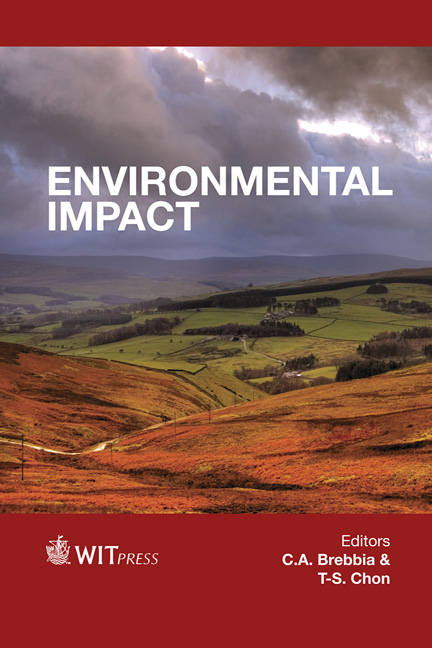Ffect Of Di-n-butylphthalate On The Development Of Spodoptera Frugiperda
Price
Free (open access)
Transaction
Volume
162
Pages
9
Page Range
553 - 561
Published
2012
Size
3,209 kb
Paper DOI
10.2495/EID120481
Copyright
WIT Press
Author(s)
D. G. Montezano, N. C. Vieceli, E. M. Cardoso, E. R. Lovatel, C. F. Gonzatti, J. A. Marzotto & I. N. Filho
Abstract
Effect of di-n-butylphthalate on the development of Spodoptera frugiperda D. G. Montezano1, N. C. Vieceli2, E. M. Cardoso2, E. R. Lovatel2, C. F. Gonzatti2, J. A. Marzotto2 & I. N. Filho2,3 1Institute of Biotechnology, University of Caxais do Sul, RS-Brazil 2Center of Exact Sciences and Technology, University of Caxias do Sul, RS-Brazil 3Institute of Environmental Sanitation, University of Caxias do Sul, RS-Brazil Abstract The insect specie Spodoptera frugiperda is at the base of food sources for several bird species and contaminations detected in those insects can be transported to the birds as well as to the whole food chain. Di-n-butyl phthalate (DnBP) is a plasticizer added to polymers to facilitate processing and increase flexibility and toughness of the final product by internal modification of the polymer molecule. DnBP can interfere in the functioning of the endocrine system (endocrine disruptor) and in the mechanism of hormone action for several animal species. As plasticizers are used in packaging, clothing, films, paints, adhesives, cosmetics, ink printers and many other products, they are widespread in virtually all environments. The present study has investigated the bioaccumulation and influence of di-n-butyl phthalate (DnBP) on the physical development of Spodoptera frugiperda. A concentration of 1 mg L-1 of DnBP was added to the diet of two insect generations, in the larval phase. The insects in the adult phase were submitted to Soxhlet extraction with n-hexane and the organic extracts were analyzed by Gas Chromatography with Flame Ionization Detection (GC/FID). In the pupa phase the number of dead individuals was 17% higher, in relation to the control group. The reductions in weight and height of the individuals exposed to DnBP were 5.64 and 2.28% respectively, compared to the control group. In this way, we may conclude that at heavily contaminated sites, bird species that use Spodoptera frugiperda as a food source may be exposed to DnBP. The concentrations of DnBP in males and females of the second
Keywords
di-n-butylphthalate, soxhlet extraction, gas chromatography, endocrine disruptors, bioaccumulation





